Are you a Quiet Speculation member?
If not, now is a perfect time to join up! Our powerful tools, breaking-news analysis, and exclusive Discord channel will make sure you stay up to date and ahead of the curve.
Spoiler and preview seasons always have ups and downs. There are the ups of amazing cards and the downs of Limited fodder. There are also the ups of instant recognition of a format staple (hello, Atarka's Command), and the downs of embarrassing card evaluation failures ("Treasure Cruise = overcosted jank gg wizards"). Magic Origins, the game's last core set, has already seen the highs of Goblin Piledriver and the lows of more Yoked Ox, but it's shaping up to be an unusually impactful set for Modern. Today, I don't want to focus on the cards people are already going crazy over, like the flipwalkers, Piledriver, Day's Undoing (which one of our authors discussed last week), or any of the other cards targeted at our format. Instead, I want us to look at some cards you may have missed while you were buying out all those Gilt-Leaf Palaces.
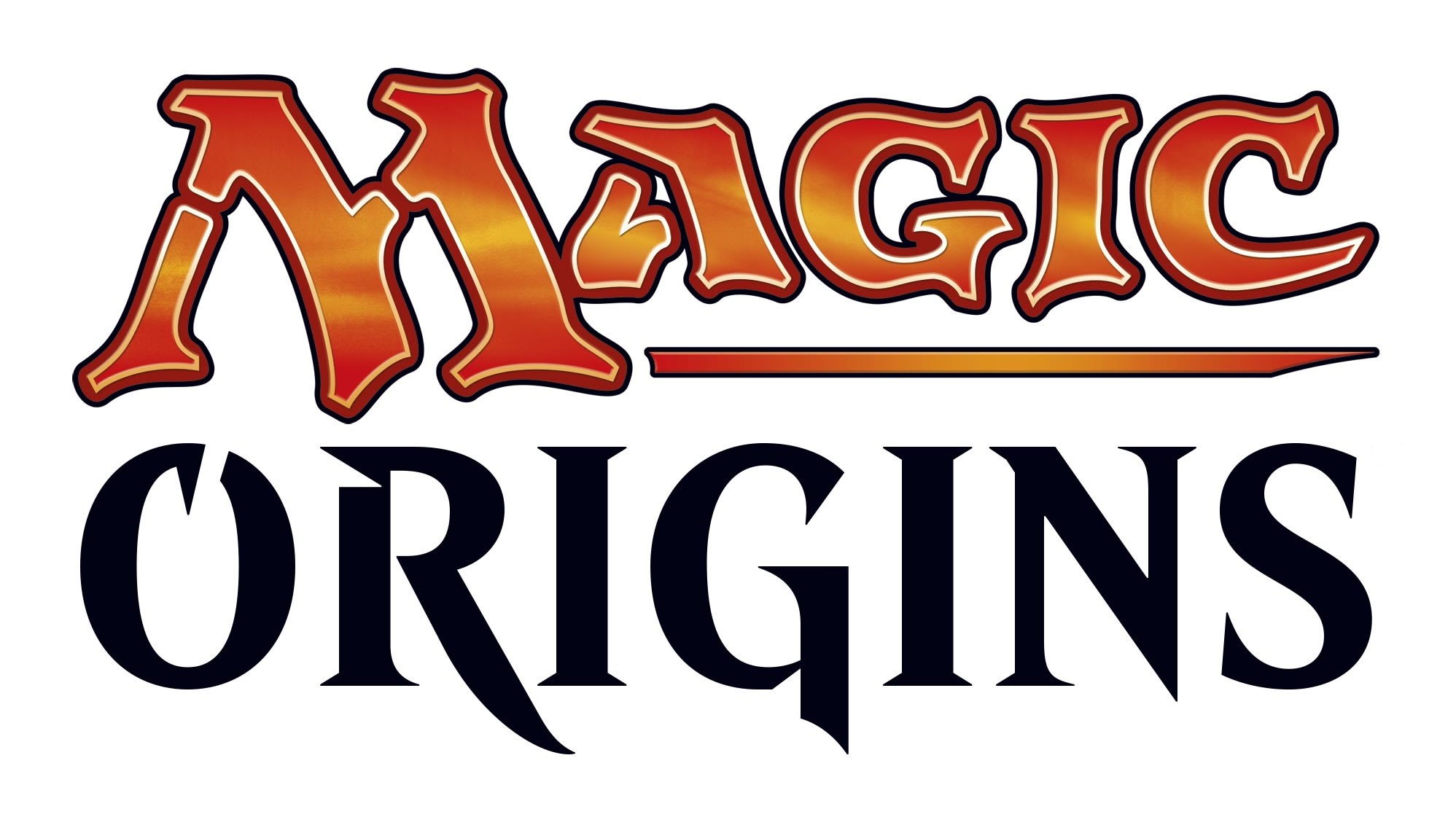 Card evaluation remains one of the hardest parts of Magic, and even the best of us get it wrong. But sometimes we are too focused on some of the splashiest cards in the set to notice the really good ones. Kolaghan's Command was a great example of this, as was Gurmag Angler. This article looks at four cards that you might have missed in your initial sweep of the spoilers. Although I don't think these are the next Command/Angler, initial theorycrafting and testing suggests these cards have some potential in Modern, either as top-tier additions or cards to pull up a less-played deck.
Card evaluation remains one of the hardest parts of Magic, and even the best of us get it wrong. But sometimes we are too focused on some of the splashiest cards in the set to notice the really good ones. Kolaghan's Command was a great example of this, as was Gurmag Angler. This article looks at four cards that you might have missed in your initial sweep of the spoilers. Although I don't think these are the next Command/Angler, initial theorycrafting and testing suggests these cards have some potential in Modern, either as top-tier additions or cards to pull up a less-played deck.
[wp_ad_camp_1]
Starfield of Nyx: Pillow Fort Prison
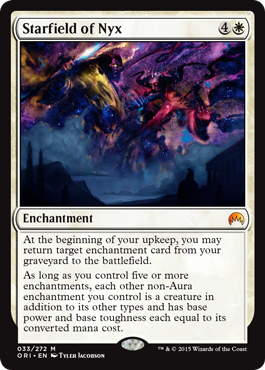 Ever wanted to maindeck Leyline of Sanctity? I know I have. In fact, there are a lot of weird white enchantments you sometimes see in the sideboard (and frequently stumble across on Gatherer), that you probably want to play in Modern. This includes the game-crushing Suppression Field, the board-stalling Ghostly Prison, the catchall Runed Halo, and the Porphyry Nodes that keep on giving. Nykthos, Shrine to Nyx often ties the whole package together, kind of like a Serra's Sanctum-lite. These strategies have existed in fringe Modern decks for years, including recent Enduring Ideal-powered lists like this 7th place build from an SCG IQ in May, and an RW take on the strategy such as this one from a 6/18 Daily (scroll down to DevoutHaruhist). All of these decks used to rely on Sigil of the Empty Throne to win the game. But with Origins, Starfield of Nyx both adds to that plan and gives you early resilience before it's time to end the game.
Ever wanted to maindeck Leyline of Sanctity? I know I have. In fact, there are a lot of weird white enchantments you sometimes see in the sideboard (and frequently stumble across on Gatherer), that you probably want to play in Modern. This includes the game-crushing Suppression Field, the board-stalling Ghostly Prison, the catchall Runed Halo, and the Porphyry Nodes that keep on giving. Nykthos, Shrine to Nyx often ties the whole package together, kind of like a Serra's Sanctum-lite. These strategies have existed in fringe Modern decks for years, including recent Enduring Ideal-powered lists like this 7th place build from an SCG IQ in May, and an RW take on the strategy such as this one from a 6/18 Daily (scroll down to DevoutHaruhist). All of these decks used to rely on Sigil of the Empty Throne to win the game. But with Origins, Starfield of Nyx both adds to that plan and gives you early resilience before it's time to end the game.
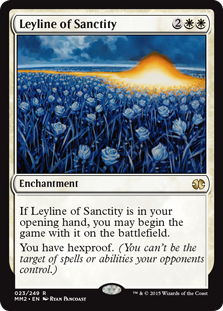 I know what you're thinking: a) These enchantment-based prison style decks are tier 5 at best, b) Starfield doesn't help them enough, and/or c) Starfield on its own looks pretty bad. Let's see how Starfield addresses those concerns in this post-Origins metagame. To start, I legitimately believe that enchantment-based decks have legs in Modern. Part of this is the raw power and versatility of their core cards. Leyline, Prison, Halo, and Field alone are incredibly powerful effects that can completely shut down an unprepared opponent. They've also gotten much better as Abzan has declined and even Jund has fallen down to just two Abrupt Decays in favor of bigger answers. These decks are also very metagame adaptable. Want to maindeck Leyline of the Void? Enchantress can accommodate that. Keep Stony Silence in the main in your Affinity-clogged metagame? This deck can do that too. Because you have fewer cards like Decay in the metagame, and because Company decks don't have the same toolbox power as Pod ones, these enchantments are much better-positioned now than they used to be.
I know what you're thinking: a) These enchantment-based prison style decks are tier 5 at best, b) Starfield doesn't help them enough, and/or c) Starfield on its own looks pretty bad. Let's see how Starfield addresses those concerns in this post-Origins metagame. To start, I legitimately believe that enchantment-based decks have legs in Modern. Part of this is the raw power and versatility of their core cards. Leyline, Prison, Halo, and Field alone are incredibly powerful effects that can completely shut down an unprepared opponent. They've also gotten much better as Abzan has declined and even Jund has fallen down to just two Abrupt Decays in favor of bigger answers. These decks are also very metagame adaptable. Want to maindeck Leyline of the Void? Enchantress can accommodate that. Keep Stony Silence in the main in your Affinity-clogged metagame? This deck can do that too. Because you have fewer cards like Decay in the metagame, and because Company decks don't have the same toolbox power as Pod ones, these enchantments are much better-positioned now than they used to be.
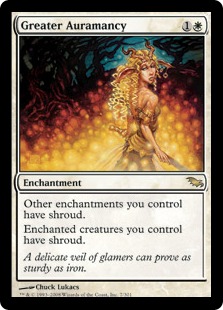 How does Starfield play into this? For one, it's a better finisher than Sigil. You land a Starfield on turn 4-5 (Utopia Sprawl is happy to help get this on turn four) and you are positioned for a big hit on turn 5-6. Sigil can't close out games for many turns, during which an opponent can build towards their own win conditions or figure out how to handle yours. Starfield lights a fire. Starfield also synergizes better with the rest of your deck, and is much more welcome as a . Stuff like Greater Auramancy becomes much better when it's giving all your creatures shroud, and all the enchantments get better when you can simply recur them every turn. In fact, the card makes it almost impossible for a fair deck to eliminate all your threats, and the enchantments themselves (e.g. Field, Halo) are more than enough to keep the unfair decks in check while you build up your force. Just watch out for Supreme Verdict and friends. Overall, I expect this card to definitely bump the enchantment-based decks' playability up a notch, and we should start to see many more of them in tier 3.
How does Starfield play into this? For one, it's a better finisher than Sigil. You land a Starfield on turn 4-5 (Utopia Sprawl is happy to help get this on turn four) and you are positioned for a big hit on turn 5-6. Sigil can't close out games for many turns, during which an opponent can build towards their own win conditions or figure out how to handle yours. Starfield lights a fire. Starfield also synergizes better with the rest of your deck, and is much more welcome as a . Stuff like Greater Auramancy becomes much better when it's giving all your creatures shroud, and all the enchantments get better when you can simply recur them every turn. In fact, the card makes it almost impossible for a fair deck to eliminate all your threats, and the enchantments themselves (e.g. Field, Halo) are more than enough to keep the unfair decks in check while you build up your force. Just watch out for Supreme Verdict and friends. Overall, I expect this card to definitely bump the enchantment-based decks' playability up a notch, and we should start to see many more of them in tier 3.
Languish: Abzan's Sweeper
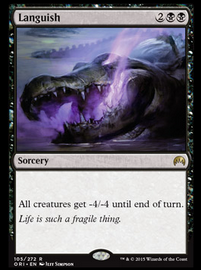 Enough of the lower-tier stuff. Let's look at Abzan. This hasn't been a great month for Abzan mages, with their deck plummeting from the most-played in the format out of even the Top 5. Jund has risen up in its place, both on hype and legitimate power: Lightning Bolt and Kolaghan's Command are things you want to be doing as a BGx player. Dark Confidant doesn't hurt either. If Abzan is to regain its old position, it needs some new tech that addresses some of its fundamental weaknesses. That's where Languish comes in. As a Modern player, the first thing I notice with this card is that it doesn't hit Tarmogoyf, Tasigur, the Golden Fang, Siege Rhino, or Gurmag Angler. That seems like a big problem, given the prevalence of those creatures and their importance in the format. But it becomes a much smaller problem when you realize you don't want to use Languish to hit those cards. You want to use Languish to hit everything else while explicitly avoiding those cards.
Enough of the lower-tier stuff. Let's look at Abzan. This hasn't been a great month for Abzan mages, with their deck plummeting from the most-played in the format out of even the Top 5. Jund has risen up in its place, both on hype and legitimate power: Lightning Bolt and Kolaghan's Command are things you want to be doing as a BGx player. Dark Confidant doesn't hurt either. If Abzan is to regain its old position, it needs some new tech that addresses some of its fundamental weaknesses. That's where Languish comes in. As a Modern player, the first thing I notice with this card is that it doesn't hit Tarmogoyf, Tasigur, the Golden Fang, Siege Rhino, or Gurmag Angler. That seems like a big problem, given the prevalence of those creatures and their importance in the format. But it becomes a much smaller problem when you realize you don't want to use Languish to hit those cards. You want to use Languish to hit everything else while explicitly avoiding those cards.
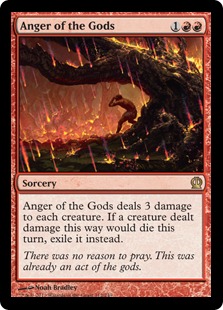 One of Jund's biggest strengths is its ability to run cards like Anger of the Gods in the sideboard. To some extent, all BGx Midrange decks are able to hold off early aggro through efficient removal (Bolt is more efficient than Path to Exile, but both get the job done), blockers like Goyf, and proactive disruption like Inquisition of Kozilek. But at a certain point, and in certain matchups, you really just need to clear the board. Or threaten to clear the board while you develop your own board state. That's where cards like Anger come in, but this was an effect Abzan didn't have access to. Sure, you had Damnation, but that was going to kill all those Rhinos, Goyfs, and Tasigurs you had deployed earlier. Yeah, you had Drown in Sorrow and Mutilate, but those couldn't even reliably kill a Wild Nacatl, let alone some true anti-Abzan bullets like Loxodon Smiter and Wilt-Leaf Liege. This put Abzan in a bad position where it needed sweepers to handle aggressive decks like Elves, Abzan Company, Zoo, Merfolk, etc. but didn't have access to Jund-quality sweepers.
One of Jund's biggest strengths is its ability to run cards like Anger of the Gods in the sideboard. To some extent, all BGx Midrange decks are able to hold off early aggro through efficient removal (Bolt is more efficient than Path to Exile, but both get the job done), blockers like Goyf, and proactive disruption like Inquisition of Kozilek. But at a certain point, and in certain matchups, you really just need to clear the board. Or threaten to clear the board while you develop your own board state. That's where cards like Anger come in, but this was an effect Abzan didn't have access to. Sure, you had Damnation, but that was going to kill all those Rhinos, Goyfs, and Tasigurs you had deployed earlier. Yeah, you had Drown in Sorrow and Mutilate, but those couldn't even reliably kill a Wild Nacatl, let alone some true anti-Abzan bullets like Loxodon Smiter and Wilt-Leaf Liege. This put Abzan in a bad position where it needed sweepers to handle aggressive decks like Elves, Abzan Company, Zoo, Merfolk, etc. but didn't have access to Jund-quality sweepers.
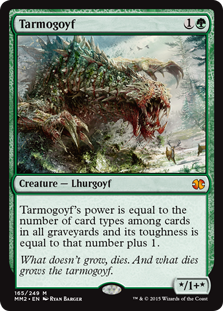 Languish changes this. It allows you to develop your board through Goyf, Tasigur, Rhino, and Souls (4C Control was already running sweepers alongside Lingering Souls, so we know that is semi-viable on its own), and then kill everything on the opponent's side if they overextend to keep pace. Four mana is a little steep relative to the three-mana Anger, but it actually hits some of the bigger threats that Anger couldn't: Liege and Smiter are huge in this category. You can also get around this in either Abzan or the BG Rock and Death Cloud versions of the deck by accelerating with Utopia Sprawl, a removal-proof "dork" that also pumps your Goyfs. Even without Sprawl, it wasn't as if Abzan was completely dead in the water against aggro by turn four. The deck had some staying power due to removal and big creatures. This cards lets you live the dream of turn two Goyf into turn three Tasigur with removal backup into turn four Languish. That leaves you with a completely clear board and two giant creatures ready to do work. Just watch out for the inconvenient anti-synergy with Goyf/Tasigur swinging for 0 damage after a Languish, and getting finished off with Bolt after you sweep the board.
Languish changes this. It allows you to develop your board through Goyf, Tasigur, Rhino, and Souls (4C Control was already running sweepers alongside Lingering Souls, so we know that is semi-viable on its own), and then kill everything on the opponent's side if they overextend to keep pace. Four mana is a little steep relative to the three-mana Anger, but it actually hits some of the bigger threats that Anger couldn't: Liege and Smiter are huge in this category. You can also get around this in either Abzan or the BG Rock and Death Cloud versions of the deck by accelerating with Utopia Sprawl, a removal-proof "dork" that also pumps your Goyfs. Even without Sprawl, it wasn't as if Abzan was completely dead in the water against aggro by turn four. The deck had some staying power due to removal and big creatures. This cards lets you live the dream of turn two Goyf into turn three Tasigur with removal backup into turn four Languish. That leaves you with a completely clear board and two giant creatures ready to do work. Just watch out for the inconvenient anti-synergy with Goyf/Tasigur swinging for 0 damage after a Languish, and getting finished off with Bolt after you sweep the board.
Pia and Kiran Nalaar: Huntmaster's Other Half
 Speaking of Jund and Abzan, one of the best reasons to play Jund is gaining access to Huntmaster of the Fells in certain matchups. Huntmaster helps Jund go wide past an opponent's defenses, invalidates one-for-one removal, and punishes stalled board states by providing too much value. Although I wouldn't go so far as to say Pia and Kiran Nalaar replace Huntmaster, or are even as good as Huntmaster, they fill a role Huntmaster does not. I like to think of them as the Huntmaster in matchups where you don't necessarily want Huntmaster himself. Huntmaster is a great card but he suffers from two problems. First, if he is removed, the 2/2 Wolf really doesn't give a lot of value. Second, if you are trying to pressure an opponent quickly, not just relieve pressure from yourself, Huntmaster doesn't deal that much damage. Pia and Kiran do not suffer from the same problems.
Speaking of Jund and Abzan, one of the best reasons to play Jund is gaining access to Huntmaster of the Fells in certain matchups. Huntmaster helps Jund go wide past an opponent's defenses, invalidates one-for-one removal, and punishes stalled board states by providing too much value. Although I wouldn't go so far as to say Pia and Kiran Nalaar replace Huntmaster, or are even as good as Huntmaster, they fill a role Huntmaster does not. I like to think of them as the Huntmaster in matchups where you don't necessarily want Huntmaster himself. Huntmaster is a great card but he suffers from two problems. First, if he is removed, the 2/2 Wolf really doesn't give a lot of value. Second, if you are trying to pressure an opponent quickly, not just relieve pressure from yourself, Huntmaster doesn't deal that much damage. Pia and Kiran do not suffer from the same problems.
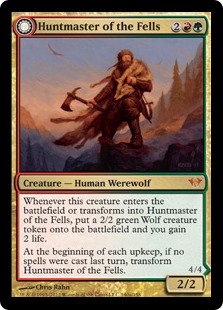 When you play the red legend (legends? Magic plurals are so unclear), you aren't getting four power on the board. Instead, you are getting six damage: two from the attacking Thopters and then four more from the sacrifice ability. Huntmaster might stall the board, but he's not great at exerting pressure. If an opponent has just a single spell on his turn, you'll untap with Huntmaster having dealt zero damage. Heck, you'll end that second Huntmaster turn with him having dealt zero damage, because you aren't throwing Huntmaster and his lone Wolf into a Tasigur or Angler. Mama and papa Nalaar don't have this issue. You untap with them and you are guaranteed two damage if you want it, four damage if you need it, and six damage if you played them later in the game. This fits Jund's gameplan, which is generally more aggressive than Abzan's and with more burn options. It also fits certain matchups where you want to be exerting pressure and not just stalling for time or board presence.
When you play the red legend (legends? Magic plurals are so unclear), you aren't getting four power on the board. Instead, you are getting six damage: two from the attacking Thopters and then four more from the sacrifice ability. Huntmaster might stall the board, but he's not great at exerting pressure. If an opponent has just a single spell on his turn, you'll untap with Huntmaster having dealt zero damage. Heck, you'll end that second Huntmaster turn with him having dealt zero damage, because you aren't throwing Huntmaster and his lone Wolf into a Tasigur or Angler. Mama and papa Nalaar don't have this issue. You untap with them and you are guaranteed two damage if you want it, four damage if you need it, and six damage if you played them later in the game. This fits Jund's gameplan, which is generally more aggressive than Abzan's and with more burn options. It also fits certain matchups where you want to be exerting pressure and not just stalling for time or board presence.
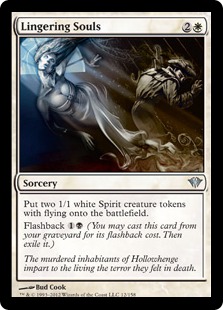 What about the situation where your opponent does kill your creature? Huntmaster is slightly better against sweepers, because at least you are guaranteed the two life even if you lose your creatuers. The Nalaars lose everything off even a Pyroclasm. But once we get to spot removal, Pia and Kiran become much stronger. A pair of 1/1 fliers is leagues more valuable than a single 2/2 earthbound Wolf. That's either two damage pinging away every turn or two trample-less threats stonewalled (or a single one stopped twice). Lingering Souls did this in Abzan to great effect: indeed, Souls is probably the reason to play Abzan in most metagames. Pia and Kiran aren't quite the Souls of Jund, but between their Souls imitation and their Huntmaster roles, this card promises to be a Jund staple in various metagames. I expect to see this maindecked when Jund needs to own its aggressive aspects, and sideboarded when Jund just needs an aggressive, quick-finish option.
What about the situation where your opponent does kill your creature? Huntmaster is slightly better against sweepers, because at least you are guaranteed the two life even if you lose your creatuers. The Nalaars lose everything off even a Pyroclasm. But once we get to spot removal, Pia and Kiran become much stronger. A pair of 1/1 fliers is leagues more valuable than a single 2/2 earthbound Wolf. That's either two damage pinging away every turn or two trample-less threats stonewalled (or a single one stopped twice). Lingering Souls did this in Abzan to great effect: indeed, Souls is probably the reason to play Abzan in most metagames. Pia and Kiran aren't quite the Souls of Jund, but between their Souls imitation and their Huntmaster roles, this card promises to be a Jund staple in various metagames. I expect to see this maindecked when Jund needs to own its aggressive aspects, and sideboarded when Jund just needs an aggressive, quick-finish option.
Woodland Bellower: Bigger Thragtusk
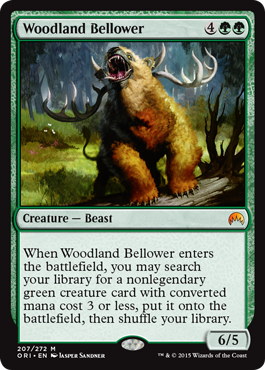 Right after GP Charlotte, I wrote an article about some of the hot tech to come out of the event. Thragtusk made the list, and as anyone who played with or against Thragtusk in Standard will remember, it's hard to get much more value on a body. Woodland Bellower looks like Wizards' attempt to fix Thragtusk in Standard, and although the card is weaker than Tusk in some respects, it also has some unique strengths that I think make it Modern playable. Let's start with the bad news first: six mana is a lot of mana. For six mana, you really need to be winning the game outright or generating such a huge board or resource advantage that you virtually win (see Primeval Titan and Wurmcoil Engine). Bellower would have been completely busted with Birthing Pod, but even in a post-Pod world, the Beast still brings a lot to the Modern table to justify his six-mana price tag.
Right after GP Charlotte, I wrote an article about some of the hot tech to come out of the event. Thragtusk made the list, and as anyone who played with or against Thragtusk in Standard will remember, it's hard to get much more value on a body. Woodland Bellower looks like Wizards' attempt to fix Thragtusk in Standard, and although the card is weaker than Tusk in some respects, it also has some unique strengths that I think make it Modern playable. Let's start with the bad news first: six mana is a lot of mana. For six mana, you really need to be winning the game outright or generating such a huge board or resource advantage that you virtually win (see Primeval Titan and Wurmcoil Engine). Bellower would have been completely busted with Birthing Pod, but even in a post-Pod world, the Beast still brings a lot to the Modern table to justify his six-mana price tag.
Before we even get to the search ability, we should be happy to see a 6/5 in the card's lower corner. 6/5 means we are at least trading with the biggest creatures in the format (Titan, Goyf, Angler, Wurmcoil), and just killing anything else that tries to tangle with the Bellower (smaller Goyfs, Tasigur, Rhino, etc.). 6 power is also a lot of power on the offense, and Bellower will close out most games in just three hits. Of course, the real reason to play Bellower isn't his vanilla stats. Its the crazy value tacked into his search clause. Thragtusk got you five life when it entered and a 3/3 when it left. Bellower can do not only that but also a huge range of other functions, depending on your matchup. Here's a quick list of all the scary and awesome cards Bellower fetches up.
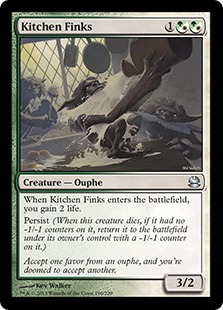 Kitchen Finks (It's actually just a better Thragtusk! Four life, two bodies, and a body left over if you get swept)
Kitchen Finks (It's actually just a better Thragtusk! Four life, two bodies, and a body left over if you get swept)- Voice of Resurgence (Control's nightmare. Now they get to face both a 6/5 and the Voice, and still have to deal with anything left over if they sweep)
- Eternal Witness (Everyone wants to Chord of Calling into Bellower, fetch a Witness, and recur the Chord)
- Knight of the Reliquary (Lots of power on the board)
- Tarmogoyf (See "Lots of power on the board", but a little more boring)
- Scavenging Ooze (Fetches up your graveyard hate)
There are a few places I see Bellower making an impact in Modern. The first is in the Kibler-style Big Zoo decks that have fallen out of fashion with the rise of Naya Company decks. Another option is in some Modern take on Legacy's Nic-Fit deck, a ramp strategy that goes over the top of fair decks with monsters like Thragtusk, Titan, Bellower, etc. We could also see this as a bullet in Company strategies that Chord into it for value. In all these possible homes, the key is that Bellower is one of those exceedingly fair cards that completely dominates a fair matchup. I expect Modern players to keep working towards these ramp decks, decks that can take commanding leads in fair matchups while also keeping up pressure in unfair ones. Bellower-style cards are central to that strategy.
More Magic Origins To Come!
If you wanted to read more on the more obvious Modern playables like Day's Undoing, Piledriver, some of the flipwalkers, etc., then stay tuned for more Magic Origins coverage as we move from June to July. Also, don't think I've forgotten about GP Singapore from over the weekend: you can expect a Singapore review article tomorrow, along with an update to our metagame tables and Top Decks page.
Card evaluation is always a hit-or-miss process. I think that a lot of Modern players lean too heavily on the side of caution and too far away from innovation. If 90%-95% of cards are unplayable in a format like Modern, then you are always making a safe bet if you brand a card as bad. But it's much more fun to speculate on the possibilities for any given card than it is to just dismiss them all out of hand. What do you think about these cards? Actual Modern playables or, sadly, more stuff for other formats? Any sleepers I missed? Looking forward to more previews and to seeing how Origins can keep Modern evolving!





Yes, the Nalaars might be playable, but nothing else really. Even though there is a case to be made for Languish, we’ve had Mutilate for a long time and it’s very easy to get to/stop at 4 swamps with all the selection you have available, between fetches, (most decks) singleton/two-at-most copies of Modern dual lands and a few basics here and there. In fact, other than some attention from the pilot to search and play the right lands, it doesn’t require any special mana base setup at all. The fact that we’ve seen 0 Mutilates played in Abzan is very telling – they want a hard board wipe, not something that is “damage”-dependant.
Oh, and for the more serious point – -4/-4 is not where you want your board wipes to be in a world where everybody is casting Tasigur/Angler. It kills everything else, but that’s irrelevant most of the time.
I think the key is playing Languish in a deck WITH those cards, in which case your playing a lot of single target removal anyway.
You dont not play Anger because it doesnt kill the 4 toughness guys. You play it to beat the aggro decks and have single target removal for the things bigger than 3 toughness.
Also, keep in mind, this kills Etched Champion. Something that Anger does not do.
The problem with Mutilate is that you aren’t reliably getting -4/-4 from it. I’d guess that in most Abzan games, especially if you are trying to fetch to avoid lifeloss against aggressive strategy, it’s no better than -3/-3 by turn 4. In some games it could even be -2/-2, depending on how many manlands, basics, and filterlands are in the mix. Moreover, Mutilate can also go TOO big, blowing up your own creatures when you really want to keep those around. Languish doesn’t have those issues.
I do agree that Languish isn’t maindeck material because it doesn’t kill Angler, Tas, and Goyf. But in the sideboard, it’s a great way to handle those aggressive strategies like the Company decks and things like Merfolk, especially for a color pairing without access to sweepers like Anger.
Good article and I totally agree with you on the Nalaars and Languish.
You excuse me though if I don’t share the optimism when it comes to Starfield of Nyx and Woodland Bellower. To chord for it in Company decks you need a combined total of nine lands/creatures. That’s a lot and if have that many resources I normally find a way to win the game anyway.
For Bellower, I’d look for it more in this Nic-Fit deck I keep speculating about in Modern but have yet to see (and honestly, it’s possible that Tron/Amulet ARE the “Nic-Fit” decks Modern already has). As for Starfield, I’m a huge fan of some of these crappy tier 4 or worse decks, and I can’t help but get excited about the effect. I genuinely think the pieces are there for those decks (Field, Prison, Halo, etc. are excellent), but we are still missing stuff.
And if enchantments.dec would ever get popular everybody would start packing Back to Nature *sadface*
But I can understand you excitement. Sometimes you just don’t won to care about competitiveness and just do silly things, right?
I know the feeling
Besides I have seen you hang around in the Belcher and 8-Rack threads so I guess it shouldn’t come as a surprise that Starfield of Nyx gets your creative juices flowing 😛
Nice write-up. I’d suggest Tooth and Nail as a nice home for the Woodland Bellower, though – you can probably put it in play by T4, and it’s probably enough of a stonewall for aggro strategies such that you can hang on for another couple of turns (plus, it can always fetch an Arbor Elf if you’re only 2-3 mana away). I know that Tooth & Nail isn’t that popular at the moment, but the Bellower may change that.
With regards to other playables, I’d like to put in a word for Vryn Wingmare in Modern Death & Taxes/Hatebears. It can be run alongside Thalia, Guardian of Thraben, and its non-legendary status means it can be stacked up and provide a means to slow your opponent down along with evasive attacker to put him on a clock. I know the D&T 3-drop slot is crowded (Blade Splicer, Flickerwisp, Kitchen Finks), but I think making room for this particular card is worth it.
Given that Legacy D&T always had access to Glowrider for this exact effect (minus flying), along with the fact that Modern is generally more creature orientated – I don’t see Vyrn Wingmare making a splash in D&T (maybe as a 1-of to go up to 5 Thalias).
I think I’d go the other way on that – running 4 Thalias is a bit of a risk in a deck that needs to apply steady offensive pressure to win and doesn’t have much access to card draw, and Vryn Wingmare lets you trim the Thalia count a bit while still having a chance to actually play them all at the same time (so no dead cards in hand).
And while I agree that Modern is more creature-oriented as a whole, I don’t think it can be ignored that Tier 1 decks like Jund and Burn only play 14-16 creatures, and that every extra +1 to cast Splinter Twin buys you at least one more turn to do something about it.
Am I the only that sees Bellower on the elves Company deck?Its easy to generate enough mana and you can fetch a multitude of creatures from archdruid to Witness to help closing the game.
The thing is you already have 4 Chord of Calling to search for your cards and if you have that much mana available just get Ezuri and end the game. No reason to play a 6 drop before doing it.
If you’re not going to win more – why win at all?
Spoken like a true Timmy 😀
Nah – I’m a Twin player and I never make exactsies 😀
I’m still surprised nobody is running the Craterhoof Behemoth win condition like legacy elves do – the Modern version is not that far off. Not to mention it’s very much castable.
Well played, justaguy
First criticism on the site. Apparently 3 replies is the maximum a single comment can have .
I am looking forward to trying out Starfield. Not convinced by the Nalaar’s you get a short term damage option but there are not other artifacts to use later. Huntmaster might be slower but it does not need the mana investment each turn and you can have 2 in play at the same time. Also those few extra points of life can matter against some decks.
I think you are underestimating how relevant the evasion is. The wolf token from Huntmaster is just a 2/2 ground guy. Pretty irrelevant since basically every creature(Snapcaster Mage, Tarmogoyf, Tasigur, Gurmag Angler, etc.) in Modern can just block and kill it. Two in the air is in an entire different league since there isn’t much in the air in Modern. A reason why Lingering Souls is such a beating. In a board stall the tokens will just keep whittling away at the life total in the mean time. Couple that with the fact that you can blow them up for 4 additional damage and you have a solid looking card.
Im not saying that it will become a staple or anything but it seriously needs some testing.